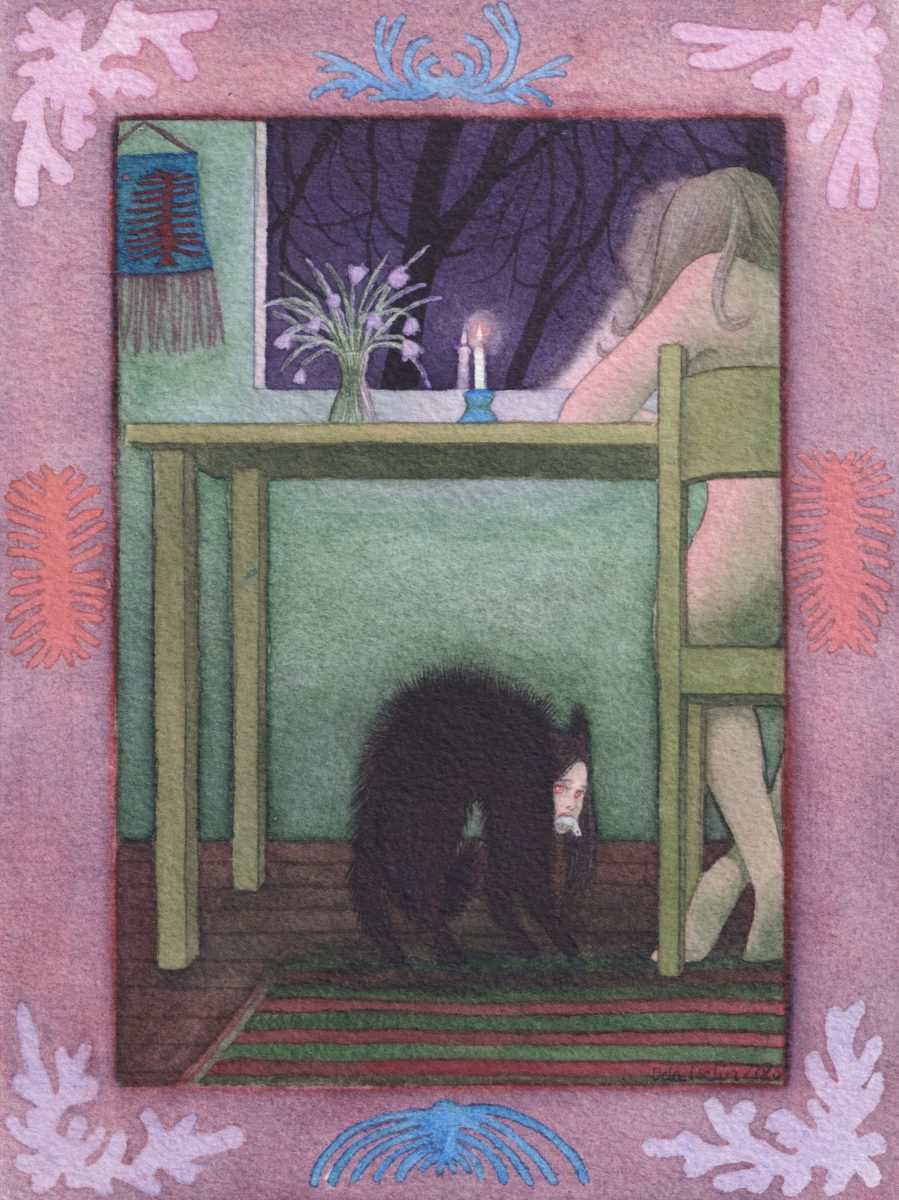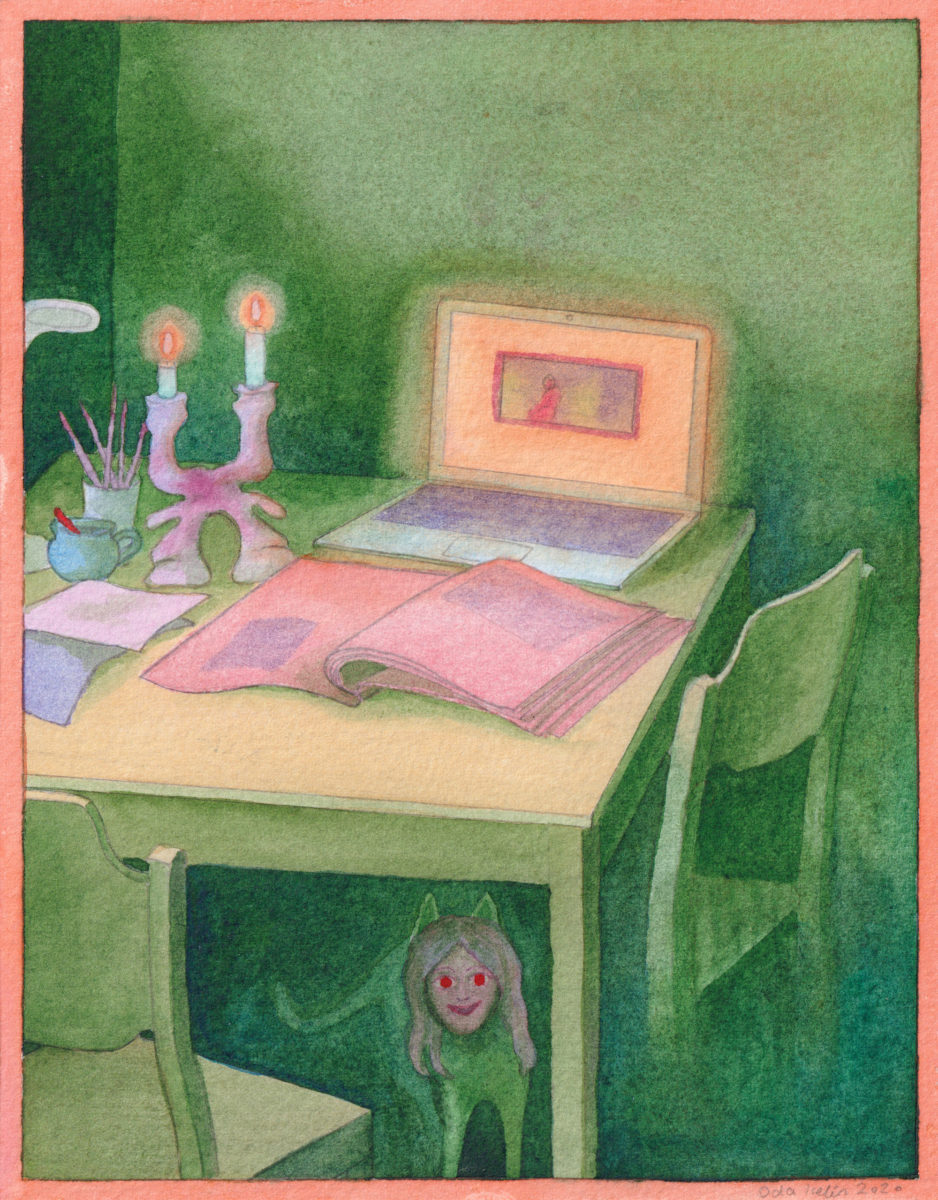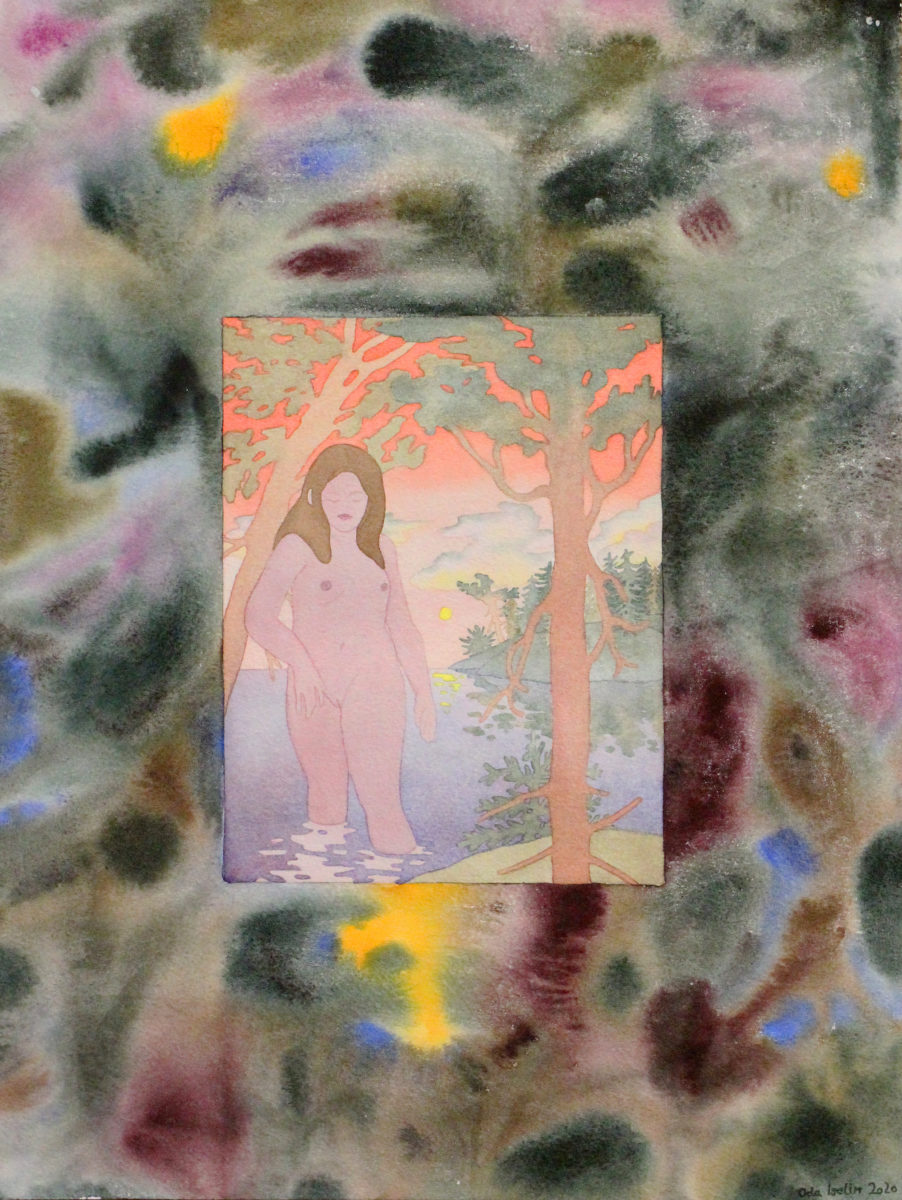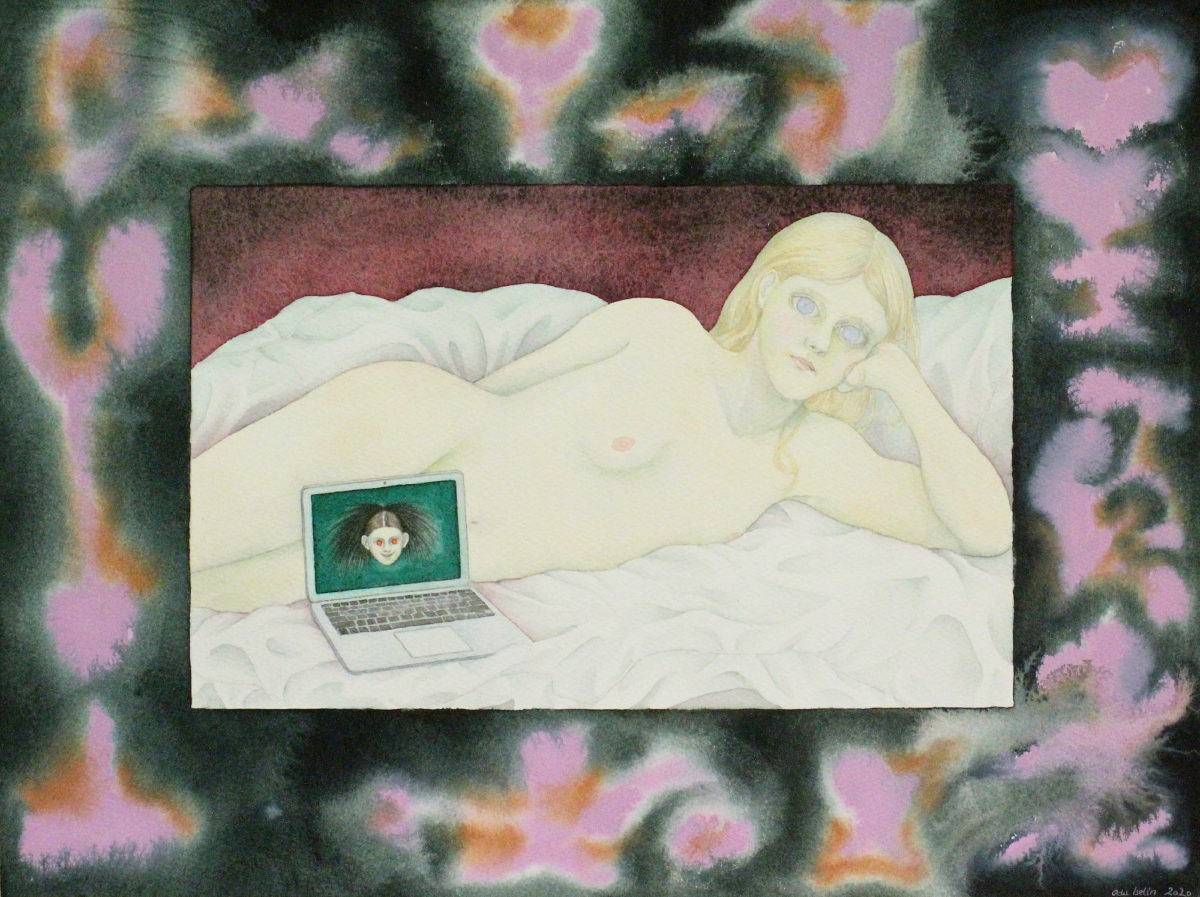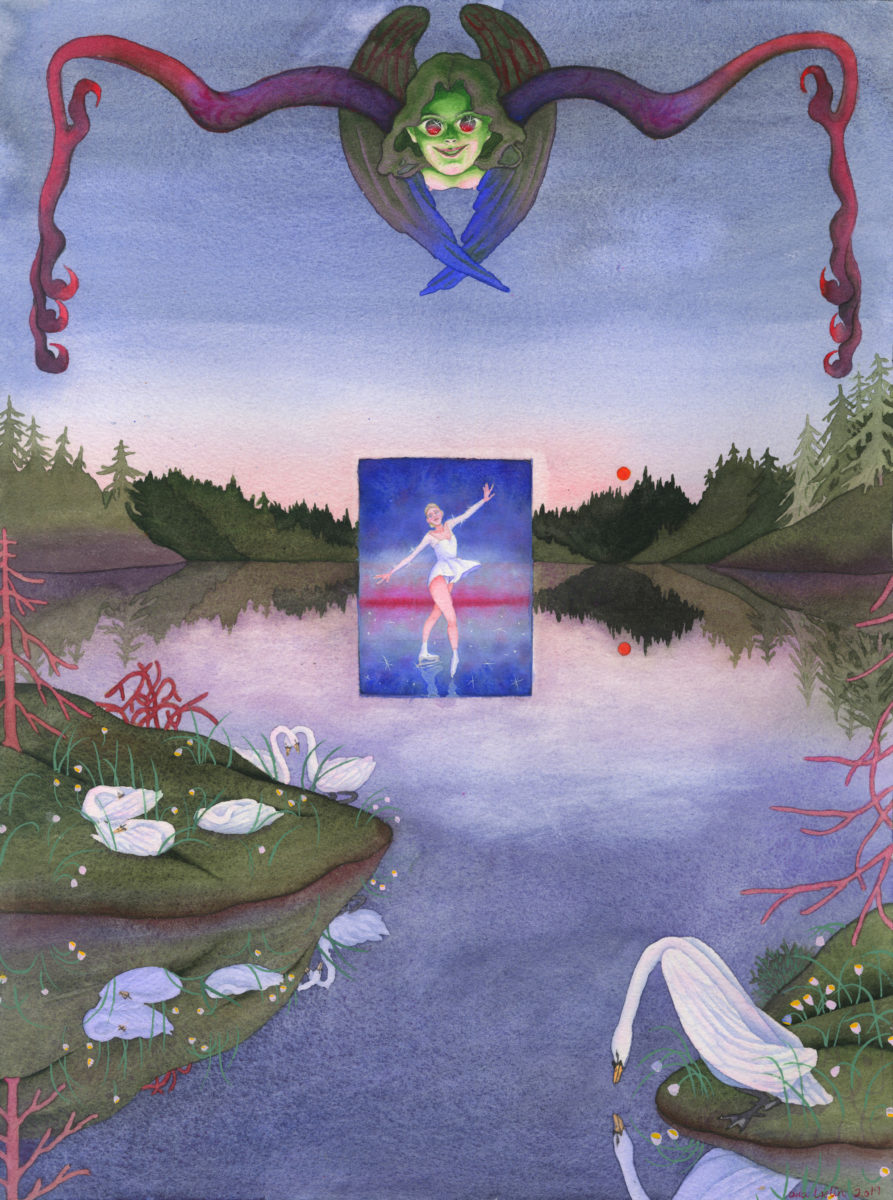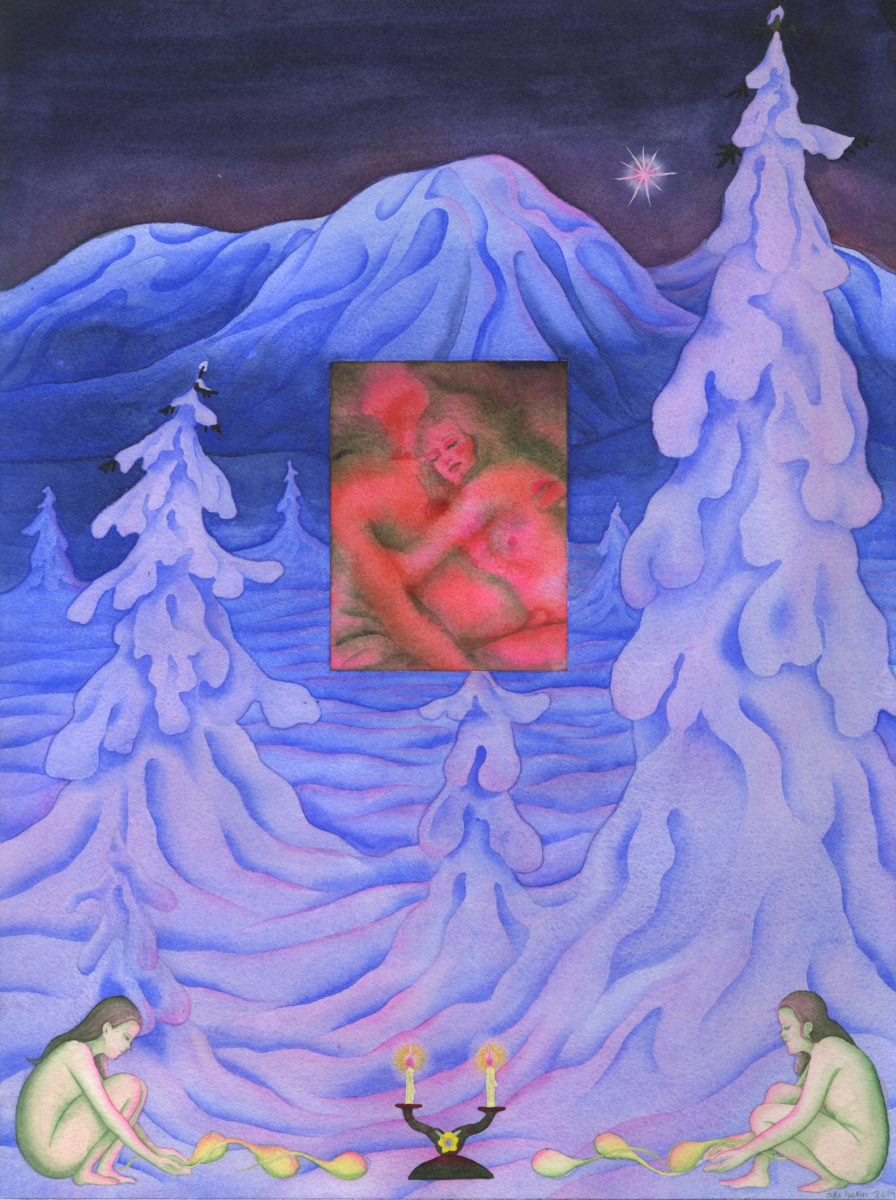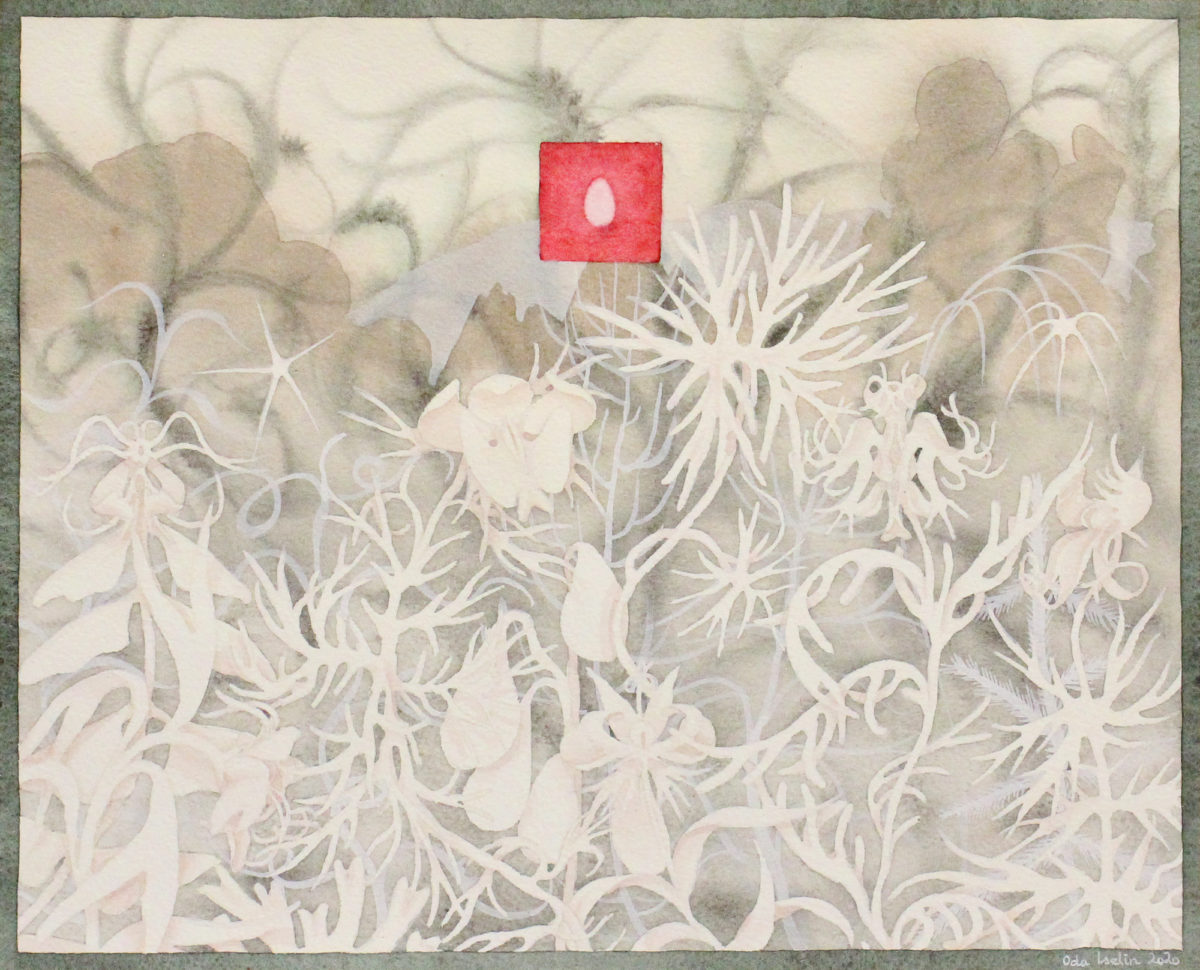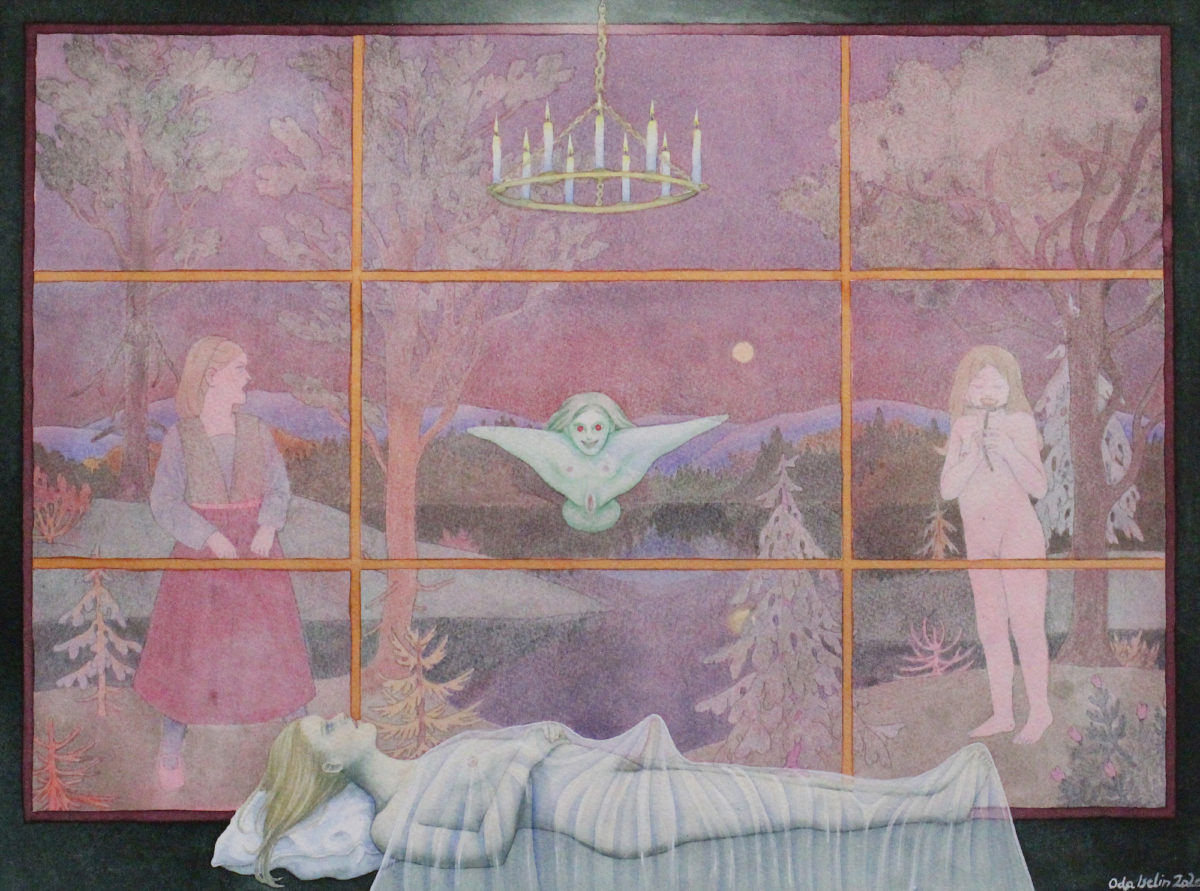
There is a sense of the foreboding in the intricate watercolour works of Oda Iselin Sønderland, as if something might be lurking just out of sight amongst the shadows. Her paintings are infused with the magical and the supernatural, with recurring motifs of candles, towering trees and visitations from the animal kingdom. Cats arch their backs, sensing danger, their eyes caught in the headlights of an unknown presence. The artist grew up in Norway, and the native folkloric tales of trolls and ominous forest creatures appear throughout her work, fused with the contemporary influence of her ongoing interest in Japanese anime and manga.
A fantasy world of witches and harpies is conjured in these images, melded with the modern-day portals of laptops and the internet. Sønderland frequently draws inspiration from her own dreams, channelling elements of the subconscious alongside ancient mythologies. With a background in graphic design and illustration, Sønderland uses figurative painting to unpick the female archetypes that so often shape popular culture, exploring the tension between innocence, desire and control.

Female subjects are the main focus of your paintings, typically presented in female-only landscapes. What affinity do you feel with your characters as a female artist, and how important is this sense of solidarity in your work?
I feel the female characters in my work are fragmentations of myself. Ever since I was young, I had the feeling of being split inside. I think this was really affected by idols in pop culture, like in anime, which I watched a lot of. It created a fragmentation of archetypes and ideals that I wanted to become. The women in my work today have developed from that outlook, so there are often girls that are half animals, harpies, or fish and cats with a girl’s face. I work very subconsciously, so I don’t have the exact words for it, but they all mean different things to me. There is this friendship between them, like the one within me between all these different fragmentations of myself.
It’s kind of like the Spice Girls, for those who don’t know anime that well: these are the types that you want to be like or identify with. It’s the same in anime: the cool girl, the funny girl, the sweet girl.
And then there’s also the witch character, the scary woman, who is really important too in my work. She has all the qualities that I leave in the shadows, because it’s hard to identify with things you don’t accept about yourself or that you’re afraid of. The harpy in my work is often flying into the scene and interrupting. There are these sweet innocent girls lying around, harmonious in nature, and then she arrives and she’s frightening; she is insisting on her presence. But there’s also something good about her, and she represents a part of me that wants to be recognised. She is an expression of the wild and the natural, and also of the sexual.
- Left to right: Lillepuse; Katt; Badende Kvinne. All 2020, courtesy the artist
“The witch represents a part of me that wants to be recognised. She is an expression of the wild and the natural, and also of the sexual”
Animals and humans metamorphose in your imagined scenes, often shown as hybrids or in the process of transformation. What interests you about this interplay between us and the natural world, and how do you seek to portray it in your paintings?
Most of my work is, at its core, about how we as humans live simultaneously with our instincts and our attraction towards nature, but also exist in our civilisation in an order and in a system. I try to reflect this conflict with these bedrooms, these rooms, these frames and these squares. Scenes are captured in these images or rooms, and it’s a way of putting things in order, but nature is still present. Humans want to live with nature, but you can’t just go out and live in the forest forever, especially here in Norway, because you would freeze to death! There is this biological fear of nature because it is dangerous, but this need to be with it too.
I am currently looking into the meaning of the animal/human hybrids in my paintings. Like the bird, the fish and the cat. The bird is a mysterious animal because it sings and it’s very beautiful, but can also be quite scary. They can fly down on you and scratch you, and they’re higher than us and connected to a world that we can’t see. The fish is connected to the sea, but we humans have also learned to swim and are curious what’s underneath the water. It’s another world that we’re not a part of but want to look inside. And then the cat is on the border between human life and nature; the domestic cat can never be fully tamed as they keep their independence and instincts intact. Some of us might have seen the way a cat cruelly plays with their prey, which is in fact a crucial instinct for their survival. They’re quite mysterious to us in this way, so in the middle ages they were believed to be connected to the devil, witches and heresy.
- Left: Den Trojanske Hest. Right: Possessed Glass. Both 2020, courtesy the artist
Folkloric influences appear in your paintings alongside distinctively contemporary elements, from laptops to cars and clothing. What place do you see for these timeless narratives alongside the trappings of modern life, and what role do they play in your work?
It has to do with incorporating my influences from everyday life, images on the internet and anime with the folklore imagery from my childhood in Norway, like paintings by the artist Theodor Kittelsen. I was told stories of mysterious, but dangerous, mythological creatures, like trolls, Huldra and Nøkken, feeding into my vivid imagination.
Here in Norway we’re very close to nature; even in the city you can take the train for just 20 minutes and you’re out in the forest. There is a real connection to these scenes that you often see in folktale illustrations.
These stories have inspired me to create my own stories and mythology within the universe of my work. The idea for my painting Den Trojanske Hest is partly based on the confusion and fear I felt when I was told as a child about a type of computer virus called ‘trojan horse’, and partly on a dream I had where a scary face popped up on my computer screen saying, “You’ve got virus, you’ve got virus!” The ideas to my work can come quite suddenly, and are often rooted in the subconscious.
- Left: Hvitsvane. Right: Juleaften. Both 2020, courtesy the artist
Anime and manga, which often depict young and teenage girls, are big influences on your work. How important is the subject of coming of age in your work, and how do you seek to depict the tensions between sexuality, puberty and identity?
This is a very strong theme in my work. I had a very difficult reaction to reaching puberty; I remember feeling that I wasn’t ready for it. My idols were these innocent girls that were like virgin archetypes of pop culture. I remember thinking that I never saw them go to the toilet and poop, and then found it embarrassing to do so! It was the same with sexuality, because I did of course get sexual feelings and that felt wrong and shameful. These memories of my teenage years show up in my work, and come back again and again in the motifs. I have made paintings that are based on dreams that I myself have had, including one where I had an erect penis. I explore sex dreams in the work, but also the shame. Shame and acceptance are both present in the image at the same time, as if you’re alone in your own room exploring the “forbidden”.
- Left: Orkideer og Egg, 2020. Right: Hevelse. Both 2020, courtesy the artist
“The ideas to my work can come quite suddenly, and are often rooted in the subconscious”
There is a dreamlike, surreal quality to your watercolours—and sometimes the sense of a nightmare. What is your relationship to the subconscious in your work?
My work contains a duality with it’s ambiguous imagery, and I think it comes from a feeling that there is always a conflict present. I feel that is just a reality that many of us live in. There are negative and positive aspects and they show up in the same image, but you’re just trying to enjoy the moment.
I think some of my best work has this feeling of dread… when you see it for the first seconds, you see it’s a beautiful scene, with a lake, nature and flowers, but there is something there that is lurking, or flying towards you and attacking you. A bit like how dreams can be; they can be really nice and then suddenly really absurd and scary. I’m trying to reflect a reality that we live in, on the inside and the outside.
